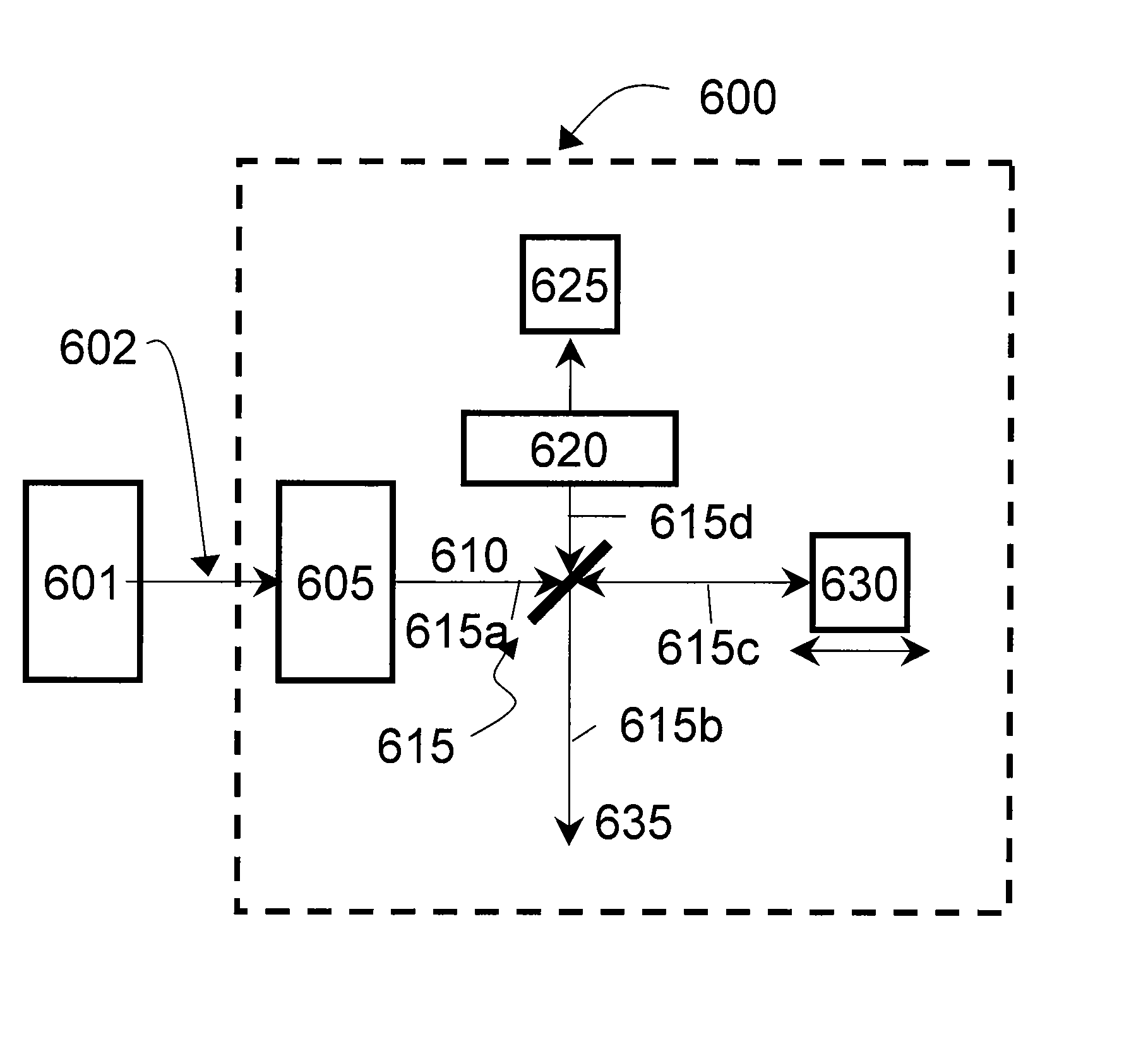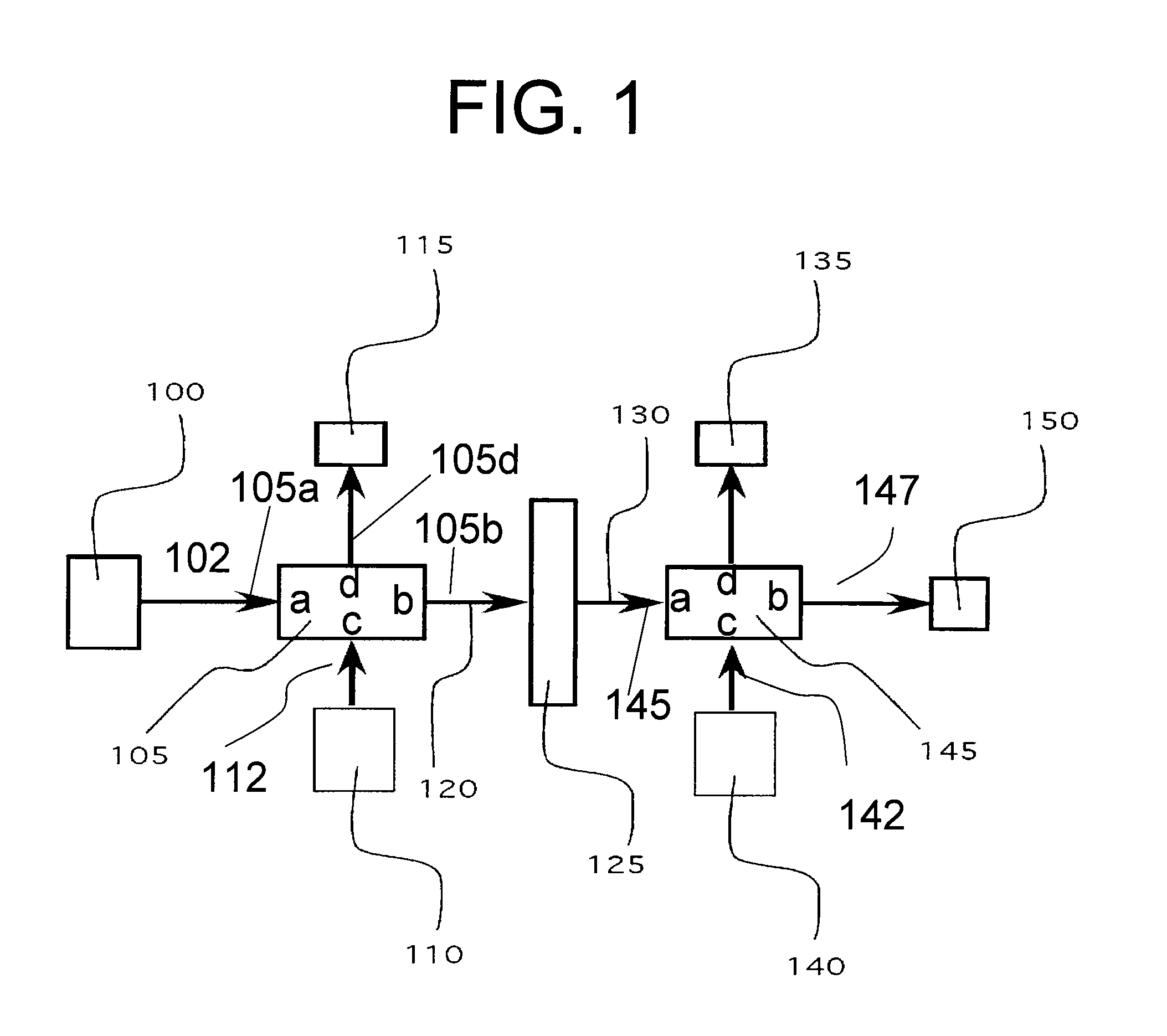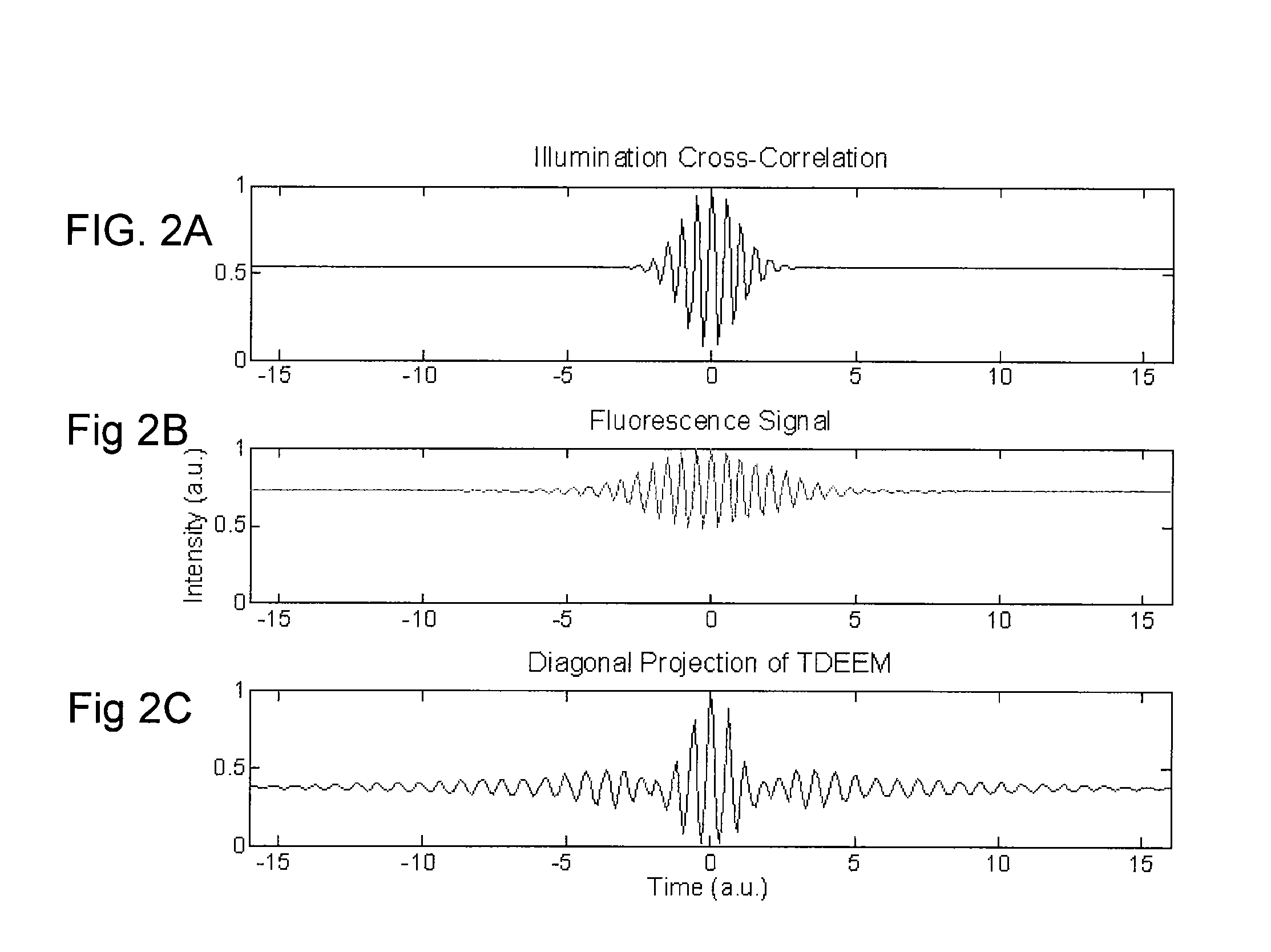Systems and methods for performing rapid fluorescence lifetime, excitation and emission spectral measurements
a fluorescence lifetime and excitation spectral technology, applied in the field of spectroscopic measurements, can solve the problems of affecting the evaluation of dynamic biological systems, and the conventional technology cannot obtain these various spectra in real-time, and achieve the effect of rapid acquisition
- Summary
- Abstract
- Description
- Claims
- Application Information
AI Technical Summary
Benefits of technology
Problems solved by technology
Method used
Image
Examples
Embodiment Construction
[0046]FIG. 1 shows an exemplary embodiment a measurement system / device which can includes a light source 100 coupled to an interferometer at a first port 105a. In one exemplary variant (as described in, e.g., J. G. Hirschberg et al., “Interferometric measurement of fluorescence excitation spectra”, Appl. Opt. 37(10), 1953 (1998)), the interferometer 105 can be provided as a Michelson interferometer which may be the same as or similar to the type described below in conjunction with the exemplary interferometer shown in FIG. 6. According to another exemplary variant, the interferometer 105 may be provided as a Sagnac 3, Mach-Zehnder, Twyman-Green interferometer. Other exemplary interferometric devices can also be used.
[0047] A second light source 110 can be coupled to a third port 105c of the interferometer 105 and a fourth port 105d of the interferometer is coupled to a device 115. Third port 105b of interferometer 105 may lead to a sample 125. A second interferometer 145 can be dis...
PUM
 Login to View More
Login to View More Abstract
Description
Claims
Application Information
 Login to View More
Login to View More - R&D
- Intellectual Property
- Life Sciences
- Materials
- Tech Scout
- Unparalleled Data Quality
- Higher Quality Content
- 60% Fewer Hallucinations
Browse by: Latest US Patents, China's latest patents, Technical Efficacy Thesaurus, Application Domain, Technology Topic, Popular Technical Reports.
© 2025 PatSnap. All rights reserved.Legal|Privacy policy|Modern Slavery Act Transparency Statement|Sitemap|About US| Contact US: help@patsnap.com



